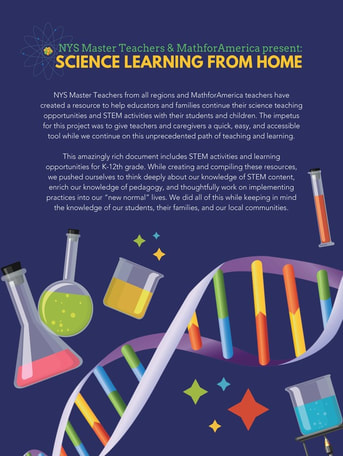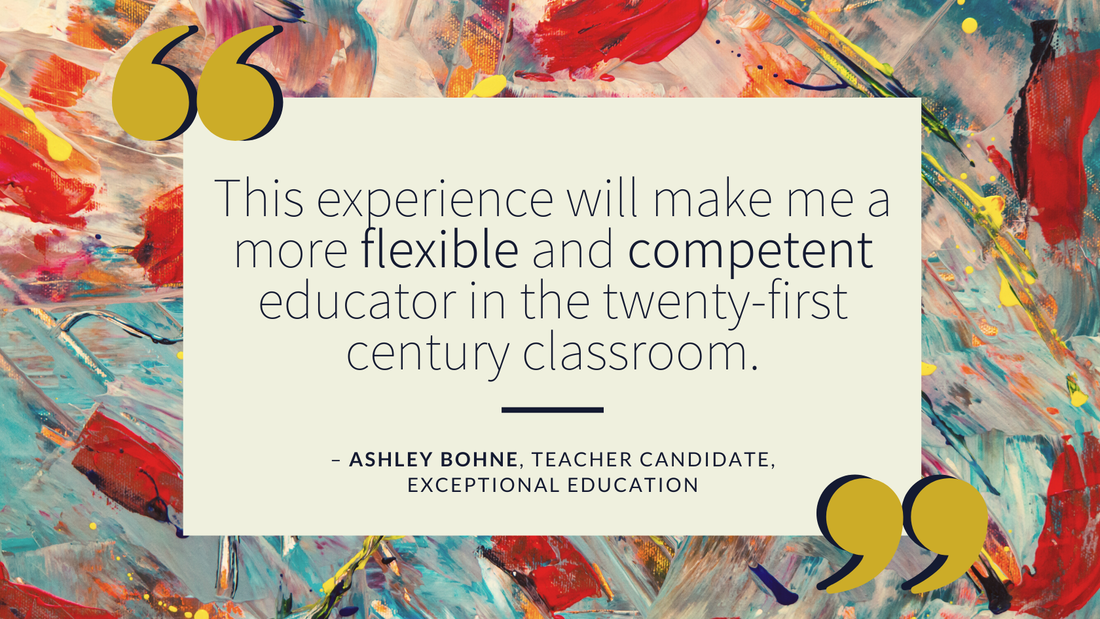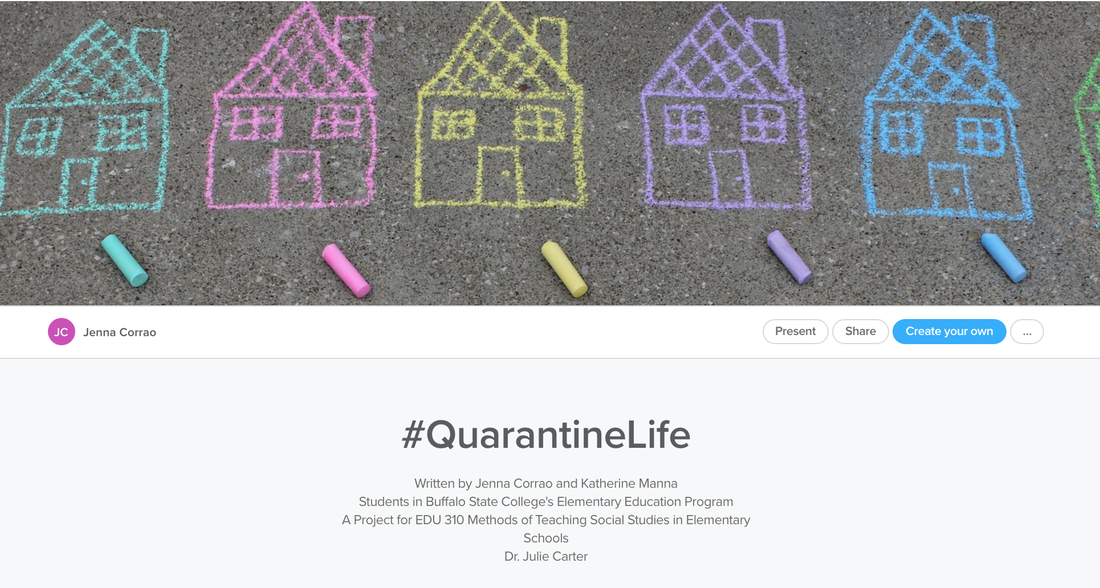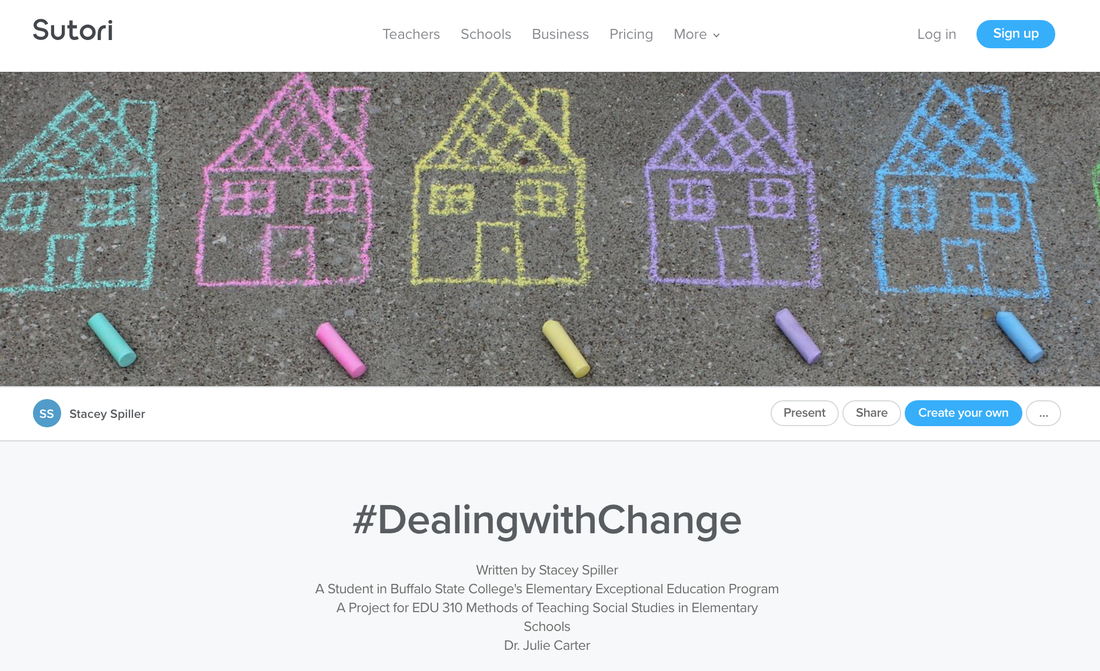|
from Patty George & Ashley Sutton | Buffalo State College Learning sight words is an important part of learning how to read. Children need to recognize sight words quickly and efficiently so they can focus on comprehending the text they are reading. A multisensory approach is a great way to help children commit these tricky words to memory. In this video, teacher candidate Ashley Sutton (Exceptional Education) is demonstrating how to practice sight words at home with Play-Doh. If you don’t have Play-Doh, Ashley provides a recipe for how to make your own! For a list of sight words, visit children’s author Jan Brett’s website to download your own beautifully illustrated sight word lists. Visit the “We Are Teachers” blog to learn 40 creative ways to practice sight words in the classroom or at home. And check out the Buffalo State Global Literacy Channel for even more videos that will help the young readers and writers in your life. Ashley Sutton is an undergraduate student in the Exceptional Education program at Buffalo State College. Following graduation in Fall of 2021, Ashley hopes to become a second-grade inclusion classroom or ESL teacher. Ashley enjoys baking and cooking and loves being an education major at Buffalo State because of the support and guidance received from her professors on her path to becoming a successful teacher.
Patricia George is a lecturer in the Elementary Education, Literacy and Educational Leadership Department and co-director of the Global Literacy Engagement initiative at Buffalo State College. Children's literature is the foundation of everything Patty does. She loves motivating teacher candidates to read to children and has worked extensively as a literacy consultant, coaching classroom teachers on effective reading and writing instruction.
0 Comments
 From David | Buffalo, NY A group of Master Teachers from across the New York state worked together over the past few weeks to put together materials for online science teaching. This collaboration blossomed into a comprehensive resource - Science Learning at Home - that teachers and parents will find useful. Although the primary audience is teachers, there were many suggestions that are great for parents looking for fun science activities to share with their children. The following lists some of my favorite variety of online and hands-on activities. This will be enough to keep your young scientist busy for a few weeks! Aquarium of the Pacific: Online Academy There are tons of age appropriate links to videos, such as virtual dissections and animal monitoring, career chats, fun activities, etc. Mystery Science Open-and-go lessons that include short videos and discussion questions on numerous elementary science topics and aligned with Next Generation Science Standards. Sharks 4 Kids Webinar Interviews with Shark Scientists and Camera Crew; must download a free version of Zoom and register in advance. Sea Smart Learning Fun, hands-on games and activities to teach K-12 students about current issues impacting our oceans. Reeko Science Science experiments, news, games, jokes and humor and resources. Science Kids Fun science experiments, cool facts, online games, activities, lesson plans, quizzes, videos, photos and science fair project ideas. NSTA Daily Do National Science Teacher Association offers daily hands on “sense-making activities” that engage students in relevant, authentic science learning. Lessons for teachers and parents. Includes access to interactive E-books on K-12 science topics. National Geographic Kids Science Lab Hands on science experiments, videos and articles for K-5 students to explore. San Francisco Exploratorium A collection of free "do at home" science activities for all ages. from Kelly | Las Vegas, NV
BrainPOP
BrainPOP is one of my absolutely favorite websites to use! Currently, BrainPOP is offering free access to all levels and topics. There is typically a membership fee. BrainPOP has many options for units, ELL, and grade level. They currently serve: BrainPOP Jr. (K-3), BrainPOP ELL, BrainPOP Spanish, BrainPOP French, and BrainPOP (5-12). The site offers a variety of topics such as: science, math, english, social studies, art, music, health and SEL, and technology. I love to use BrainPOP when it comes to health education. In health, we talk a lot about personal hygiene, body parts and systems, mental health, drugs and alcohol, decision making, conflict resolution, relationships, emotions, goal setting, and exercise. BrainPOP offers animated videos for multiple topics, and provides free, printable worksheets of key vocabulary and check for understanding. It may seem “kid oriented” but I use this at the high school level too! The language is easy to understand and follow. Scholastic Scholastic is also offering free access to their weekly articles. The link above will take you to the homepage where all you have to do is select the appropriate grade level. From there, it will direct the user to a page full of articles, some complete with online quizzes, scavenger hunts, and videos. The topics range greatly and more are added every week. Newsela This is one of my go-to’s. It is a kid and teen friendly site that offers free access with a login account. Newsela stays current and up-to-date with everything going on in the world from sports and weather, to national women’s day around the globe. For health, I especially love the Newsela Social-Emotional Learning (SEL) collection. From elementary to high school grade levels, Newsela offers articles of all kinds that discuss real-world problems and situations kids and teens face daily, like mental health, anxiety, emotions, and bullying. Newsela also allows the user to select a reading level. It will be the same article, but the language can be altered to a lower reading level or to a higher reading level. Quizzes are available at the end of most articles as well. GoNoodle GoNoodle is definitely more “kid oriented," however I’ve done multiple of these and I am always out of breath by the end! GoNoodle is a free website, all you have to do is create an account, that gives you access to follow-along videos to get those bodies moving. It is a great resource especially for young kids who have extra energy, or just need a brain break! Other Ideas:
from Ashley | Buffalo, NY The transition to distance learning has created barriers for students of all ages as well as their teachers, professors, and families. Teacher candidates in Dr. Julie Carter’s EDU 310, Teaching Social Studies in the Elementary School course at SUNY Buffalo State worked diligently to remove some of those barriers for students at Waterfront Elementary school. The teacher candidates’ major project was a five-lesson unit plan which integrated social justice as well as history content focused on the American Revolution. Panic Sets In As students and professors learned they would be moving to distance learning in the weeks to come, this invoked panic in many. Many teacher candidates wondered what impact these decisions would have on their education in the weeks to come. While professors did not have the answers to these questions immediately, Dr. Carter got to work determining how her students can stay connected with students to maintain a mutually beneficial relationship. Making Changes Within the next week, Dr. Carter worked out the changes to reflect learning in a virtual environment. While there were many changes, the course itself remained very much the same. Students would still be teaching the students at Waterfront Elementary about the American Revolution, but instead with online modules and activities. Dr. Carter searched for the best online learning tools and located Sutori, which is an incredibly easy to navigate tool that presents materials to students in a “feed.” As you scroll from the top to the bottom of the page, students will see all materials necessary for each day in chronological order. This format makes content delivery easily manageable for college students and easily accessible for students and their families. Teacher candidates worked in three groups to create lessons about the American Revolution which integrated; mapping, arts, and literature. Collaboration looked a bit different than it may if we were still on campus, but it did not stop. Teacher candidates welcomed the use of Zoom video chatting platform in order to plan most of their lessons together. To stay in touch in between video calls, students used a platform called Slack which made accountability easy. Before We Teach, We Bond Before diving into learning about the American Revolution, as in any “classroom” setting it was essential that we create a socioemotional bond with the students. This was more important than ever during these particularly stressful times. Student volunteers created lessons based around socioemotional awareness and managing emotions during these stressful times, which showed students examples of coping strategies for staying safe and busy within their homes.
Because students would be completing these modules independently, it was more important than ever that teacher candidates locate a variety of resources to teach students. A few of these resources include interactive mapping, text, videos, and drawing activities. It was also important for teacher candidates to ensure that their lessons would be accessible to students with varying abilities. It is unrealistic to expect that every student will do every assignment during a time like this. While recognizing this, teacher candidates also believe this project can be a great tool for parents as they try to navigate their children’s distance learning. By clicking one link, the student will be brought to a series of engaging activities. Challenge Accepted As a teacher candidate pushed into distance learning and teaching, it was easy to feel overwhelmed with the task at hand. For so long I have relied very heavily on face-to-face instruction. How could I ever make distance learning work? It wasn’t easy, but when I figured it out, it was a great feeling! As I come to the end of my undergraduate career within the next year, I will be grateful for this opportunity. This short period of discomfort allowed me to grow more than I could have imagined as a teacher candidate. I am now aware of the resources which are available to facilitate learning and communication from a distance. This experience will make me a more flexible and competent educator in the twenty-first century classroom. While the situation which led to this change has been less than ideal, I have grown tremendously as a teacher candidate. Ashley Bohne is an undergraduate student in the Exceptional Education program at Buffalo State College. Ashley also serves as a PDS Student Representative. Following graduation in Spring of 2021, Ashley will begin the Literacy Specialist program. Ashley has a particular passion for working with students with special needs in a variety of settings.
 from Tamara | Buffalo, NY Anyone who spends time with children (of all ages) quickly learns that the path of development is not straight, smooth and obvious, but rather full of twists, turns, even detours and sometimes backtracking. As soon as we think we know what is happening and how we should respond, everything goes off track and we find ourselves full of questions and frustration once again, seemingly back to square one. Anyone who spends time with children also learns that journey can be rewarding and joyful, especially when we feel mentally equipped and emotionally capable of stretching and re-aligning as we go. We feel empowered and energized each time we get something "right" with our kids and know deep down that we've met them where they are at right now, and gave them what they needed from us at this moment. Especially during this time of worry and change, when all families are spending more time with their children - with the added role of daily teacher - it is important to have a deeper understanding of the stages of child development and the empathy for the different paths that each child takes within these norms. An awareness of the stages of child development is critical for understanding children, and being prepared to meet their needs appropriately. Knowing what to expect with each phase of your children’s growth is helpful for maintaining perspective and determining ways to support children in becoming successful individuals who are capable of reaching their full potential. Knowing what is typical for certain ages will also help you be more patient, understanding, and tolerant of challenging behaviors and reduce the chance for blaming -- blaming your child for acting in ways that you think are inappropriate, and blaming yourself for your inability to “control” or meet the challenges they bring! The Center for Parenting Education provides a wonderful overview of child development and typical child behavior. Because each child is unique, how you approach one child will differ from how you approach another. What works for one caregiver may not work for another. What works with a child one moment may not work later (or even immediately after the first time). As you read through the lists, it is imperative to remember that children grow and learn in their own unique ways and in their own unique timing. You can use this information about the stages of development to prepare yourself, then be ready to adapt or let go as your child needs. While knowledge is power, flexibility is freedom! |
WELCOME!
Hearing from others can be the antidote to the overwhelm and stress you feel as you navigate homeschooling. Longstanding teachers, retired educators, brand new homeschooling parents and guardians, budding teacher candidates...we want to hear from you! Please contact us to share your wisdom, struggles, support, ideas, advice, empowerment, and inspiration. Archives
March 2021
Categories |




 RSS Feed
RSS Feed